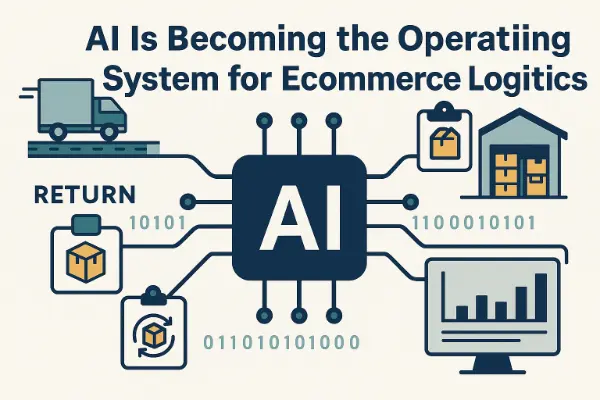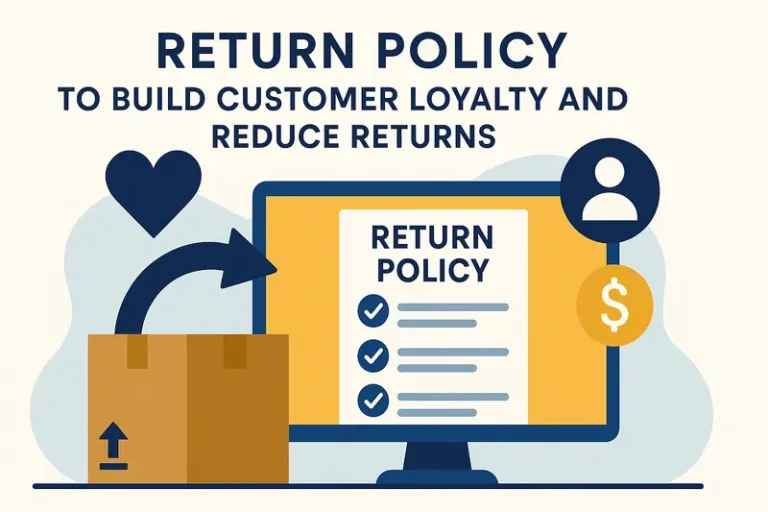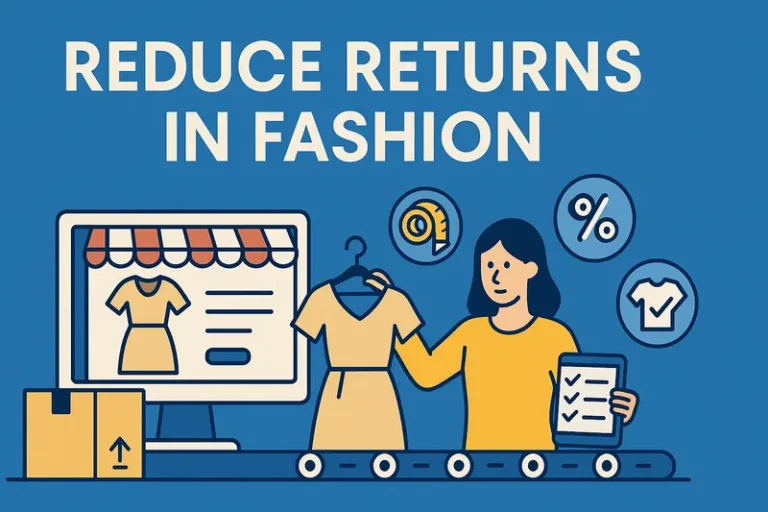Coopetition is Disrupting Ecommerce Order Fulfillment
In this article
 23 minutes
23 minutes
Coopetition is the act of cooperation between competing companies with partial congruence of interests to gain advantage by cooperation and generating more value by working together.
Coopetition is the act of cooperation between competing companies with partial congruence of interests to gain advantage by cooperation and generating more value by working together.
Amazon makes up most of the US ecommerce sales. However, they rely heavily on 3rd party sellers. These sellers experience major pain related to ecommerce order fulfillment cost and time. It can be a challenge to meet the fast shipping demands of customers with 1-day and 2-day shipping costs nationwide cutting deep into profits.
Fast shipping is now an expectation, but it is expensive for most sellers. Sellers often limit fast shipping to very small items or to local addresses. This limits their Amazon buy box opportunities.
This presentation highlights how Sellers can save time and money on shipping by using strategic coopetition – a concept that has been around for centuries
Coopetion in Ecommerce Order Fulfillment from Cahoot Ecommerce Fulfillment
ANCIENT ROME HAD A LENDING PROBLEM
Rome offers a great example of coopetition strategy. Once upon a time around 3rd Century BC, Roman Empire was immensely extended.
At this time, the 4 most lucrative business activities were: renting buildings, agriculture, lending money and maritime trade. The two last activities were closely linked because in order to engage in a trading business, one needed capital, which meant the need for borrowing money. Transport of goods on land for more than tens of kilometers were not feasible because of high costs and the material conditions to mobilize. Trade (especially maritime trade) had greatly contributed to the development of Rome and its Empire.
During this period of Roman antiquity, the organization of trade was significantly similar to ours, with mostly small businesses. Profession of maritime merchant at this time could be defined as a wholesaler activity. First, they had to purchase goods to sell it afterwards, hence the need to borrow money
But, long distance trade suffered from lack of information until the invention of telegraph. There was uncertainty all along the journey because no information was transmitted until goods’ final delivery. Hence, Landlords didn’t practice long distance trade, they sold their own products to local merchants who exported it afterwards. These merchants operated free markets and were in competition locally because “when several merchants sell the same products in the same area and there is formation of prices, there is competition”
Rich senators and landlords divided their wealth in two activities, on the one hand agriculture and on the other hand individual loans. Lending money was a very profitable activity and maritime loan was the most profitable but riskier. Its reimbursement rate was very low because of a very high level of defection, scams and many malice acts during Republic times. Being a landlord was honorable whereas being a merchant wasn’t. Tradespeople suffered from a very bad reputation. This resulted in a major lending problem at the time.
Make Returns Profitable, Yes!
Cut shipping and processing costs by 70% with our patented peer-to-peer returns solution. 4x faster than traditional returns.
See How It WorksAround the 3rd century BC, a rich landlord and a senator by the name of Caton, wanted to diversify his investments, and wanted to have more lucrative loans by mitigating his risks. So, he invented a concept of collective loan. To ensure reimbursement of loans, Caton asked his borrowers (the merchants in this case) to form an association. They had to create a society by assembling enough colleagues to gather fifty merchants and fifty ships. He would then loan the money to the group instead of an individual member. Caton allocated loans to a large number of ships, thereby reducing the risks of maritime incidents. He started the activity of collective maritime loan, comparable to modern concept of microcredit. This society worked following a principle of auto-selection and auto-management. Borrowers were therefore linked together and each had a part of responsibility, which established a social pressure on them. So, the merchants cooperated, via this common association. This collective loan had a fixed and high rate. This didn’t only decrease maritime risks, but also the one linked to borrowers’ disloyalty.
These loans allowed merchants to purchase goods, then they repaid it after having sold these goods. Collective loan is the first activity of collaboration between merchants during maritime trade process.
After having purchased their goods, merchants cooperated on another activity: sea freight. Acts of fraud and piracy occurred very often during Roman Republic, and also loss of goods due to weather related hazards. A shipwreck represented a terrible economic loss.
Facing these uncertainties related to navigation conditions and to avoid the complete loss of goods, merchants divided their total quantity of goods on various ships. This divided risks of loss of cargos due to maritime incidents or deliberates acts.
Second, transport of goods by sea were long and expensive. The higher the tonnage was and the cheaper the freight was, which motivated the merchants to fill boats for deliveries by joining forces. It was possible to rent space on a boat of another competing merchant. It did not make financial sense for each merchant to send ships with sub-optimal load to the same destination, hence these competing merchants came together to follow the “common freight for a journey” principle which was win-win for all of them.
With many owners for the same freight, risks were divided; the effect is the same as the one about the association imposed by Caton to his borrowers. It is an act of safety which needs many actors and transactions.
Romans combined cooperative and competitive activities in the trading process:
- In the first activity of the value chain, to get collective loan, merchants cooperated via an association asked by the lender (Caton). Cooperation was not only informal but was institutional. Merchants were linked together via the association’s management, which imposed to them a social pressure, diminishing loan default risks.
- Once funding is obtained, in the second activity of the value chain, merchants were rivals to purchase goods from suppliers at the best price. Loan obtained collectively allowed them to purchase goods individually, without any form of cooperation.
- Into the third activity of the value chain, related to ship freight, merchants cooperated to minimize risks of cargos’ loss due to sea accidents or deliberate acts of piracy. Social pressure stayed strong but wasn’t institutionalized as for collective loan. This was the result of merchants’ deliberate strategy due to strong economies of scale in this activity of the value chain. Transportation costs greatly decreased when cargos’ burden increased, which made collective freight very profitable.
- For the last activity of the value chain, once goods arrived at their destination, merchants ended any form of cooperation and sold their goods individually. Rivalry was very strong to sell their goods to the same consumers.
HIGH TIDE LIFTS ALL BOATS
The entire system benefitted:
- Commerce was a major driver of the Roman Empire and of wealth
- Maritime commerce one of the most profitable forms of commerce
- As coopetition increased the maritime merchants position improved, and so did the Empire’s.
WHAT IS COOPETITION
Coopetition is the act of cooperation between competing companies with similar interests to gain advantage by cooperation with the goal of generating more value by working together compared to the value created without interaction.
Coopetition is “the dyadic and paradoxical relationship that emerges when two firms cooperate in some activities, such as in a strategic alliance, and at the same time compete with each other in other activities” (Bengtsson and Kock, 2000, p. 412).
Think of it as “firms collaborating in order to increase the size of the business pie, and then compete to divide it up.”
Roman merchants used coopetition since the beginning of the 3rd century BC. Hence, Coopetition is not a modern strategy driven by the double race to globalization and technology, which began at the beginning of the 1980’s. However, many major examples of coopetition are identified from the 1950’s. Driven by public policies in Japan, and in Europe, coopetition is responsible for many industrial successes.
STRATEGIC COOPETITION BENEFITS
Grow Current Markets
In 2004, rivals Sony and Samsung joined forces to build a LCD manufacturing facility in South Korea in order to better compete against LG and Phillips. Partly because of the new factory, the average price for LCD televisions that are 40 inches or larger fell from about $8,000 to $1,500
Gain Resource Efficiency
Formed in 1997, Star Alliance now counts over 27 airlines as partners and serves over 640 million passengers each year. One of the biggest benefits of STAR ALLIANCE is codesharing. Using this arrangement, two or more airlines are able to sell the same flight using the same code. Codesharing reduces the costs associated with operating underbooked flights while it increases the visibility of an airline who is able to boast multiple routes worldwide despite not actually operating them. Increased scale allows partner airlines to gain efficiency and access to complementary assets.
ECOMMERCE ORDER FULFILLMENT PROBLEM
Fast shipping is the expectation, but fast shipping is expensive.
COOPETITION STRATEGY IN ACTION
Changing Dynamics of the Parcel Shipping Industry
- Explosion in parcel volume due to e-commerce
- Relationship between the players in the market is changing
- Coopetition is leading to a “win-win” situation
USPS Core Strengths
- “Last mile” connectivity
- Literally touches every doorstep, 153M delivery points
- Processing and handling capabilities that excel at smaller packages (< 5 lbs.)
- Low marginal delivery costs
UPS Core Strengths
- Highly automated distribution hubs that include larger vehicles, rail and airplane
- Superior routing logistics for large package transport
- Efficient airport-to-airport delivery
- Lower per unit upstream cost
Scope
- UPS picks up a package from the warehouse or distribution center and moves it through the UPS parcel network
- UPS delivers package to USPS for the “last mile” delivery to a residential address
Coopetition Results
- UPS and USPS share the revenue
- Increased market share and revenue
- Lower cost from optimized distribution efficiency
- Lower delivery charges for customers
- Improved customer service
- Sustainability and lower CO2 emissions
Convert Returns Into New Sales and Profits
Our peer-to-peer returns system instantly resells returned items—no warehouse processing, and get paid before you refund.
I'm Interested in Peer-to-Peer ReturnsCOOPETITION RISKS AND BENEFITS
Whether you are familiar or not with the term, you’ve likely seen examples of coopetition in the news in some form or another. But of course, in these sort of deals, when two large competitors who first and foremost are looking to protect their own interests partner up, conflict happens. In fact, coopetition arrangements between larger competitors are often temporary…
COOPETITION REQUIREMENTS
- But the best, most successful, most sustainable coopetition arrangements – where you aren’t starting and restarting or terminating permanently – nearly always happen when then participants/stakeholders are looking to achieve something greater then themselves. Something greater than their own individual profits, or their combined benefits.
- A large external north star provides a guiding light for partners so that they don’t have to spend time, arguing over which priorities are most important. Or spend energy and resources focused on protecting themselves within the partnerships. A big bright, north star keeps them aligned on the same path for the long-term.
MLS
“And sometimes, competitors come together to change the way an entire industry operates. Back in the 1800’s, U.S. real estate agents began to create multiple listing services. Essentially, they paid into a listing service that allowed agents to see information regarding potential deals represented by competing agents. And agents received additional commissions for helping one another out. The approach allowed even the smallest firms to compete on the same footing as industry behemoths.
- Sometimes, come together to change how entire industry operates
- 1800’s: US RE agents create multiple listing services: “Realtors would meet at the offices of their local association and share with one another information about the properties they were trying to sell.”
- Paid into a listing service that shared deal info of competing agents
- Shared commissions
- Fundamental principal: “Help me sell my inventory and I’ll help you sell yours.”
- Smallest firms can compete on same level as industry behemoths.
Increase probability of long-term coopetition success:
- information is shared
- constant communication is present
- participants feel they can continuously learn
- information used to collectively adjust to external environment
In fact, MLS’s are still used today, even in the modern information age. Making the market liquid, helping agents earn their keep, and making easier for average citizen to buy into the American dream.
Governance
This case of Roman merchants during Antiquity also shed light on contractual forms of coopetition. Cooperation to get loan is an example of institutionalized coopetition through creation of an association by borrowers, driven by the lender (Caton). We find here an example of coopetition imposed by a third actor, as it could be possible in our contemporary period.
This actor plays a role of initiator and manager of coopetition. Structured management by the third actor appears as a tool and ensures good performance of implemented coopetition strategy.
Size of firms involved in coopetition is another interesting element of discussion. Coopetition in antic maritime trade appears in small business context. This contradicts the commonly shared idea by researchers that coopetition appeared first in big companies, in order to increase their power
- Another way to play this game. The Roman way. And coopetition works even better when things are set up so that many direct stakeholders benefit along the way.
- Often times, a collection of small businesses will use this way of coopetition to forward their collective interests in an entire region, market, or industry.
Constant data communication: Knowledge sharing/transfer/creation à competitive information asymmetry
Constant communication facilitates learning, opportunities, and trust
Data: A shared measurement system; Adapt to data
Backbone: Aware potential stakeholder synergies and power dynamics.
Proactive facilitator of stakeholder relationships and resources. Oversight of network performance, environmental risk.
Learning: Each partner believes it can learn from the other. Continuous and dynamic process that adjust to environment and helps participants evolve.
This brings up another point in putting together strategic coopetition arrangements. An arrangement where information is shared, constant communication is present, and where participants feel they can continuously learn from the experience greatly increases the probable long-term success of a coopetition agreement. Doubly so when information can be used to help the participants collectively adjust to any threats or changes in the external environment.”
Is Coopetition worth the trouble?
But is this really possible in today’s day and age? Why would two dominate forces look to spend resources to pursue benefits that are achieved beyond themselves?
The Big Reservation
- And, inevitably, at this point, a few will have a very specific reservation. It’s usually the small business owner. The man or woman who has owned their business for 2, 5, maybe 20 years, and is worried about supporting their employees and surviving as they compete against companies many times their size. They’ll say something like…
- Does coopetition really mean a few large companies orchestrate some way to grow the entire pie, and then have an even larger share of it? How can I be sure I benefit?
- Or in other words, do these big companies tout cooperation as something everybody benefits from, but really they operate in the same old way of doing business.
Yara Coopetition
We’ll take a broad look at how two very different companies—the Norway-based manufacturer Yara and the retail giant Walmart—have used collective-impact principles to improve their ecosystems for all concerned.
Yara is a global leader in fertilizer manufacturing based in Norway. It faced numerous obstacles in its effort to reach small African farmers from its port of entry in Tanzania. Yara’s Fertilizer had the potential to increase crop yields in the famine-afflicted country. But corruption in the government-controlled port delayed the unloading of shipments for many months. Roads were inadequate for transporting the fertilizer to farms and the produce back to the port; a third of the harvest was typically left to rot for lack of refrigerated transport. Farmers were poor, often illiterate, and unaccustomed to using fertilizer; they also lacked access to credit. A government ban on the export of key crops, meant to protect local consumption, had the unintended consequence of shrinking the market and curbing capital investment.
All this added up to a classic market failure that propagated famine and poverty and also curtailed Yara’s growth. The problem was deeply entrenched: The farmers had little power to influence government policy, and they were suspicious of any changes to their traditional methods. International aid temporarily alleviated hunger but left the underlying issues untouched. No single intervention could prevail; success required that all the interrelated obstacles be addressed at once.
Starting in October 2009, Yara worked to bring together 68 organizations, including multinational companies, civil society groups, international aid agencies, and the Tanzanian government, in a partnership known as the Southern Agricultural Growth Corridor of Tanzania (SAGCOT). The mission was to build a $3.4 billion fully developed agricultural corridor from the Indian Ocean to the country’s western border, covering an area the size of Italy. It involved investing in infrastructure, including the port, a fertilizer terminal, roads, rail, and electricity; fostering better-managed farmer cooperatives; bringing in agro dealers and financial services providers; and supporting agro-processing facilities and transport services. Public sources have provided one-third of SAGCOT’s funding; the rest comes from the participating private enterprises. Although originally envisioned as a 20-year project, the corridor was well established within 3 years and has already bolstered the incomes of hundreds of thousands of farmers. Yara was decisive in launching the effort but did not lead or control it. Nor was the company’s investment—$60 million—a major part of the funding. Yet the project has boosted Yara’s sales in the region by 50% and increased the company’s EBITDA by 42%.
Walmart Coopetition
Societal constraints are not limited to emerging markets, of course.
In 2012, as Walmart was working to reduce its packaging costs by eliminating 20 million tons of greenhouse gas emissions from its supply chain and, it encountered an unexpected roadblock: Its suppliers could not source enough recycled plastic to use in their packaging. It turned out that 45% of the U.S. population lived in cities that were still dumping trash in landfills. Even though recycling would have yielded significant new revenues and savings, cash-strapped municipalities could not afford the up-front investment required for collection and sorting equipment and for campaigns to change consumer behavior. So in April 2013 Walmart, like Yara, convened a cross-sector coalition of NGOs, city managers, recyclers, major consumer brand companies (including direct competitors such as Unilever and P&G), and financing experts from Goldman Sachs. Many of the participants had spent years trying to launch their own recycling programs; by the time they met, all recognized that the problem could be solved only by collectively addressing the challenge of financing municipal curbside recycling.
Together, 10 companies invested in the $100 million Closed Loop Fund, whose purpose is to promote investments in recycling infrastructure across the United States. It is governed by an independent committee of experts in finance, the environment, recycling, supply chain, and municipal management.
To date the fund has financed 10 projects. As the result of one project, every household in Memphis, Tennessee—a city that had no curbside recycling whatsoever—now has access to convenient recycling carts. These 10 projects alone are expected to reduce annual waste to landfill by more than 800,000 tons and cut greenhouse gas emissions by more than 250,000 tons while creating hundreds of jobs.
And the benefits to Walmart are considerable: The increased availability of recycled materials strengthens its supply chain and reduces the cost of packaging. Again like Yara, Walmart neither led nor controlled its cross-sector effort—but it provided the necessary impetus.
A SOLUTION FOR ALL
So at this point, you should have some sense of not only what strategic coopetition means, but when done right, what it can achieve for those who decide to participate. It’s generally, at this point, when I can get people to understand the true power of coopetition, that people get excited. They began to think about ways to leverage this approach for the benefit of their own businesses, or problems they know everyone in their industry or neighborhood are facing.
GREED IS GOOD
In the words of Gordon Gekko, “Greed, for lack of a better word, is good.” Greed is a clean drive that “captures the essence of the evolutionary spirit. Greed, in all of its forms; greed for life, for money, for love, knowledge has marked the upward surge of mankind.” If the first caveman didn’t greedily want cooked meat and a warm cave, he never would have bothered to figure out how to start a fire.
BUT, GOOD IS BETTER
The problem with greed however is that it’s a zero sum game; somebody wins, somebody loses. Money itself isn’t lost or made as Gekko said; it’s simply transferred.”
The goal of strategic coopetition on the other hand is to increase the size of the pie, such that all the players reap the benefits proportionately.
THE NEW WAY WORKS BEST
The Power of Many: Coopetition Examples
There’s another way to play this game. The Roman way, if you like. Coopetition works even better when things are set up so that many direct stakeholders benefit along the way. Often times, a collection of small businesses will use this way of coopetition to forward their collective interests in an entire region, market, or industry.
Porto Alegre Beer: For example, in the Porto Alegre region of Brazil, local microbreweries very much did as the Romans. They worked together to collectively purchase and distribute goods to lower costs and achieve scale in making and delivering their products. They went one step forward, creating formal and informal associations that worked together to successfully position Porto Alegre beers as premium products. [5 small firms producing specialty beers located in the Anchieta neighborhood in the city of Porto Alegre, Brazil work together to forward local microbrewery market. Initiatives include purchasing and distribiution. à This all seemed to happen fairly recently, in the 2000’s/2010’s. Led to revitalization of local neighborhood.]
California Dairy: In the United States, dairy farmers across California collectively invested in shared advertising campaigns to further penetrate their collective markets.
Pic Saint Loop Wine: French wineries in the Pic Saint Loup region did same in an even more organized fashion, running creating one organization that successfully position Pic Saint Loup wines as premium brands and grew their collective market in the process. [Informal community to exchange practices and resources. guided by a proactive economic effort: the positioning in a niche for “premium” wines. Decided to found a collective brand in order to follow their individual strategies. Thus, the winemakers of Pic Saint-Loup took part in a global movement to launch a collective brand. The collective brand supports a coopetition strategy based on quality improvement of the products. The relationships between the members, the rules of production and the union were formalized.
No More Return Waste
Help the planet and your profits—our award-winning returns tech reduces landfill waste and recycles value. Real savings, No greenwashing!
Learn About Sustainable ReturnsBIG CHALLENGES REQUIRE EVOLVED THINKING
In the past, companies rarely perceived themselves as agents of social change. Yet the connection between social progress and business success is increasingly clear. For example: The first large-scale program to diagnose and treat HIV/AIDS in South Africa was introduced by the global mining company Anglo American to protect its workforce and reduce absenteeism. The €76 billion Italian energy company Enel now generates 45% of its power from renewable and carbon-neutral energy sources, preventing 92 million tons of CO2 emissions annually. And MasterCard has brought mobile-banking technology to more than 200 million people in developing countries who previously lacked access to financial services.
If business could stimulate social progress in every region of the globe, poverty, pollution, and disease would decline and corporate profits would rise. In recent years creating shared value—pursuing financial success in a way that also yields societal benefits—has become an imperative for corporations, for two reasons. The legitimacy of business has been sharply called into question, with companies seen as prospering at the expense of the broader community. At the same time, many of the world’s problems, from income inequality to climate change, from childhood obesity to human trafficking, are so far-reaching that solutions require us to combine our expertise and resources and evolve our way of thinking.
But even as corporations pursue shared value strategies, businesses inevitably face barriers at many turns. No company operates in isolation; each exists in an ecosystem where societal conditions may curtail its markets and restrict the productivity of its suppliers and distributors. Government policies present their own limitations, and cultural norms also influence demand.
These conditions are beyond the control of any company. To advance shared value efforts, businesses must foster and participate in multisector coalitions—and for that they need a new framework. Strategic coopetition is one such framework. Companies that embrace such new frameworks will not only advance social progress but also find economic opportunities that their competitors miss.
Learn more about how you can leverage the power of coopetition. Offer 1-day and 2-day shipping at ground rates or less. Drive
down your shipping costs, delight your customers, and scale as big as you want.
Turn Returns Into New Revenue
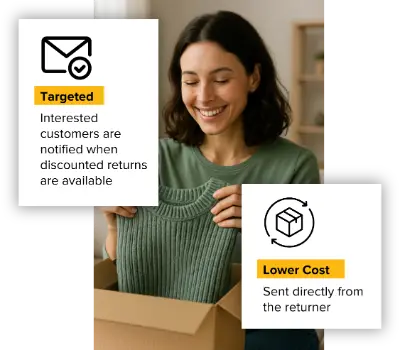
How To Value Your eCommerce Business: A Comprehensive Guide
In this article
 15 minutes
15 minutes
- How to Value an E-Commerce Business
- SDE
- EBITDA
- What are Add-Backs?
- What About Inventory?
- Pricing Windows
- What Goes Into a Multiple?
- Growth Trends
- Business Age
- Owner Involvement
- Stability of Earnings
- Strength of your Supply Chain
- Diversity of SKUs
- Stability and Diversity of Traffic
- Protecting Your Products
- Reap the Rewards of Your Hard Work through an Accurate Valuation
Building an eCommerce business can be an exhilarating and lucrative journey. You’ve likely poured your heart and soul into growing your brand, meticulously selecting products, and building an efficient supply chain.
However, when it comes to putting a price tag on your business, it’s not just about the sweat and toil you’ve invested. There are many other factors that come into play.
Whether you’re thinking about selling soon or simply want an accurate gauge of your business’s performance, understanding how to value your business is crucial.
We’ve sold hundreds of eCommerce businesses on our marketplace, so we know a thing or two about accurate valuations.
In this article, we’ll share some of that knowledge with you, taking a closer look at the factors that play a pivotal role in the valuation process.
So, let’s explore the ins and outs of valuing your eCommerce business.
How to Value an E-Commerce Business
While you likely already have a figure in mind when it comes to how much your business is worth, accurately valuing an eCommerce business hinges on important, measurable factors instead of gut feel.
While many factors play a role in valuations, the actual valuation formula is surprisingly simple.
Average Net Profit X Multiple = Valuation
As you can see, your net profit plays an important role in your valuation. This is because, for the most part, the more money a business makes, the more it is worth.
When calculating your net profit, it’s best to use a rolling 12-month average to account for any fluctuations in earnings or any seasonality the business experiences.
There’s more that goes into a valuation that we’ll discuss later on, but first, let’s take a closer look at the two most common methods used to calculate net profit.
Make Returns Profitable, Yes!
Cut shipping and processing costs by 70% with our patented peer-to-peer returns solution. 4x faster than traditional returns.
See How It WorksSDE
The first and most commonly used method is called seller discretionary earnings (SDE).
The idea here is to level the playing field by removing the current owner of the business from the equation. This allows for easier comparisons between different businesses, as it standardizes the earnings calculation by eliminating owner-specific variables.
To figure out SDE, you start with the business’s profit. Then, you add back the money the owner pays themselves, as well as any special benefits they get from the business (like health insurance).
One-time or non-recurring expenses are added back too, as they won’t affect a new owner. Non-cash expenses like interest, taxes, and depreciation are also added back, along with any other discretionary expenses.
SDE is the most common valuation method and most suitable for businesses up to around $5 million in annual revenue.
When businesses earn over this amount, they usually have a more complex structure in terms of a hierarchy of staff, as well as multiple stakeholders. This is where the EBITDA model comes in.
EBITDA
The Earnings Before Interest, Taxes, Depreciation, and Amortization (EBITDA) method uses a similar approach to SDE but acknowledges that larger businesses aren’t owner-operated in the same way.
When businesses scale up and get more complex, they often have a whole hierarchy of staff and multiple stakeholders. Therefore, unlike SDE, EBITDA won’t add back salaries for managers and employees, considering them necessary operational costs.
While EBITDA is a powerful tool, we won’t dive too deeply into it here, as it’s typically more relevant to larger enterprises and is unlikely to apply to many business owners reading this.
Nevertheless, understanding these two methods allows you to choose the right tool for the right job when it comes to assessing the value of your business. So whether you’re running a small Amazon FBA business or a bustling eCommerce empire, there’s a valuation method tailored to your unique circumstances.
What are Add-Backs?
Add-backs are costs that a new owner doesn’t need to incur to keep the business running. These expenses can also include one-time costs that won’t recur.
For instance, if you run an Amazon FBA business, the associated Amazon fees are considered a necessary operating expense. On the other hand, expenses related to a home office are not essential because eCommerce businesses can typically be managed remotely.
Therefore, a new owner wouldn’t need to continue the home office expense. This is why a home office is considered an acceptable add-back, while Amazon fees are not.
Some other examples of add-backs may include:
- Trademark expenses
- Personal travel costs
- A one-time website redesign
- Co-working space fees
- Subscription fees to industry newsletters and communities
It’s important to note that there can be some ambiguity regarding what qualifies as an add-back, and there might be disagreements between the broker, buyer, and seller.
Generally, eCommerce store add-backs tend to be relatively small compared to the overall earnings of the business. Therefore, if certain costs are not added back in, they usually won’t have a significant impact on the final valuation.
In case there’s uncertainty or disagreement about an add-back, it’s crucial to ensure that it’s clearly documented in the profit and loss (P&L) statement. This transparency allows potential buyers to analyze the add-back as part of their due diligence process, helping them make informed decisions about the business.
What About Inventory?
When it comes to determining the value of an eCommerce business, inventory is normally excluded from the calculation.
Inventory only becomes significant when your store has recently faced stock shortages or foresees upcoming supply chain or manufacturing difficulties.
The reason behind this exclusion is that if the buyer can’t sell the inventory, it loses its value. Moreover, perishable goods may, well, perish if they can’t be sold quickly.
For these reasons, inventory is typically treated as an additional cost for the buyer, based on the product’s landed cost. This approach ensures fairness for both the seller and the buyer.
At Empire Flippers, we don’t charge a commission on the inventory’s cost, but it’s worth noting that some business brokers do. It’s crucial to consider what happens to inventory when selecting a broker for selling your business.
Pricing Windows
Referring back to the valuation formula, we mentioned that it’s best to use a rolling 12-month average in your calculation. This is known as a pricing window.
It’s essentially the length of time we calculate the profits over. The length of the pricing window can fluctuate to best reflect the current state of the business.
A 12-month pricing window is the most desirable option as it presents the most accurate representation of the business as a whole, rather than only capturing a sharp period of growth or decline.
For example, if you sell jet skis, you likely experience a slump in sales over the winter months, and then an increase in summer, with a larger boost over the summer holidays. A 12-month pricing window will accurately reflect these ups and downs.
Since a 12-month window gives the most accurate reflection of the business’s health, it makes the business more desirable to buyers.
That said, there are some instances where you may want to use a shorter pricing window.
This is most common in businesses that have experienced rapid growth or steep decline. It may have taken a hit from a Google algorithm update and declined as a result, or it could be experiencing an acceleration of demand. In these cases, the current state of the business may be drastically different compared to 6 months ago.
A shorter pricing window can also benefit fledgling businesses where the initial months were primarily about getting the business off the ground. During this early phase, revenue tends to surge, and the most recent six months better depict the business’s present state.
A shorter pricing window reflects a level of uncertainty and instability and therefore results in a lower multiple and smaller pool of buyers.
Speaking of multiples, let’s take a closer look at what goes into this crucial part of the valuation formula.
Convert Returns Into New Sales and Profits
Our peer-to-peer returns system instantly resells returned items—no warehouse processing, and get paid before you refund.
I'm Interested in Peer-to-Peer ReturnsWhat Goes Into a Multiple?
The multiple is essentially a representation of the strength, stability, and potential of your business. In other words, all of the other things buyers care about over and above profitability.
Almost all aspects of your business will be considered when determining a multiple.
Here are some of the main considerations that will be taken into account when valuing an eCommerce business.
Growth Trends
The direction your business is heading is one of the first things buyers scrutinize when assessing whether your business is the right fit for them.
Clearly, upward growth is more enticing than the opposite, and it often leads to a higher valuation for your store.
Yet, it’s not just about whether you’re growing; the rate of growth matters too.
While hyper-growth is exciting, most buyers prefer a sustainable eCommerce store. Rapid expansion can be unpredictable, leaving buyers wondering where it will plateau. Scaling aggressively can also come with inefficiencies, which buyers will investigate during due diligence.
At the end of the day, businesses that can demonstrate stable, healthy growth trends will attract the largest pool of buyers.
But if your business doesn’t fall into this category, don’t let that deter you from putting your business on the market. While most buyers look for growing businesses, others seek businesses with untapped potential in processes or marketing channels, recognizing room for improvement.
Even declining businesses can find buyers, though the severity of the decline will affect the valuation. These businesses generally command lower multiples due to the reduced buyer interest.
Business Age
A business is typically judged on its track record, with buyers assessing the consistency of its profitability and performance over time.
While many businesses experience rapid or gradual growth over a short period, one that consistently earns over several years proves its stability.
It also takes time for a business to establish itself within a niche. A long-standing business showing steady growth has likely secured a position as a leader in its specific market segment.
Therefore, businesses with a longer track record typically receive higher valuations.
A business with less than a year of profitability is considered young, lacking sufficient data to demonstrate market staying power.
Once a business crosses the two-year mark, it likely finds its footing, catching the attention of more buyers. For those with three or more years of profitability, they’ve not only proved their worth but can often command a higher multiple.
Owner Involvement
For the most part, buyers are looking for an investment, an opportunity that will get them one step closer to financial freedom. They are not looking for a full-time job that requires them to work tirelessly after investing thousands of dollars.
While it can be challenging to entrust others with your hard-built store, excessive owner involvement can deter potential buyers.
Ideally, spending around five to ten hours a week on your business is acceptable, but beyond that, it may adversely impact the valuation multiple.
Fortunately, many eCommerce tasks can be outsourced, such as order fulfillment and customer service, often without the need for full-time employees. Implementing standard operating procedures (SOPs) simplifies task delegation and can be valuable during the sale process, helping buyers understand your operations.
Before selling, communicate with freelancers you’ve employed to ensure their willingness to collaborate with the new owner. Transferring your team streamlines the transition and enhances your business’s appeal.
Put simply, the key to making your business more marketable and scalable is to make yourself redundant.
Stability of Earnings
Buyers are on the hunt for a healthy business that promises a solid return on their investment. This makes the stability of your earnings a key concern.
Steady earnings indicate that your business operates on optimized processes, you have a reliable supply chain, and an established customer base.
Unstable earnings, on the other hand, may point to underlying issues within the business, such as inventory mismanagement or a lack of product-market fit.
Stability in your earnings also indicates that your business has built-in defensibility to help it ride out natural fluctuation in the market.
At the end of the day, buyers are looking for an income they can rely on, regardless of changing trends or economic conditions.
Strength of your Supply Chain
Your supply chain forms the very backbone of your eCommerce store, with the success of your business hinging on how products are manufactured and delivered to your customers.
To fortify your supply chain, consider sourcing from at least two different manufacturers, ideally from different countries. This strategic move provides flexibility, allowing you to pivot quickly to avoid unexpected delays, as demonstrated during the global pandemic’s restrictions.
Outsourcing fulfillment is equally crucial. Handling inventory in-house can complicate the sale of your business. Remember, the majority of buyers are looking for a streamlined, turnkey business. They don’t want the complication of managing fulfillment and storage over and above running the business.
Consider hiring a third-party logistics (3PL) provider. These specialists manage inventory and ensure timely customer delivery.
Formalize agreements with manufacturers and fulfillment providers whenever possible. Buyers will value transferable deals, especially if you’ve negotiated advantageous rates. Contracts can serve as valuable assets for your business.
Diversity of SKUs
Buyers will also pay close attention to the diversity of your product offerings.
Having a variety of different products prevents the business from relying solely on one item. You’re essentially ensuring that all your eggs aren’t in one basket.
If one product faces a drop in popularity, gets delisted on platforms like Amazon, or falls out of favor due to new laws or regulations, your business can still thrive thanks to the revenue generated by your other products.
All of this works towards protecting the buyer’s return on investment once they take over the business.
Stability and Diversity of Traffic
Much like with your earnings, buyers are looking for stability when it comes to traffic growth. Buyers will want to dig deeper into any sudden spikes or dips in traffic to understand the underlying reasons behind these fluctuations.
Buyers and business brokers will also need an easy way to view your traffic data, so it’s a good idea to have an analytics platform like Google Analytics or Clicky installed on your website. To protect any sensitive data, make sure you give buyers read-only access.
This will allow buyers to look at data like:
- The geographic sources of your traffic
- Top-performing website pages by traffic percentage
- The bounce rate.
These details provide valuable insights into what’s working effectively and where potential opportunities lie.
Traffic channels that drive revenue are another area where diversification is key. While most eCommerce businesses use paid advertising to attract customers, pairing this with organic traffic from search engine optimization (SEO) is particularly attractive.
Unlike paid ads, SEO requires minimal ongoing investment once it’s established. Having a strong social media following and a robust email list are also great ways to diversify your traffic.
No More Return Waste
Help the planet and your profits—our award-winning returns tech reduces landfill waste and recycles value. Real savings, No greenwashing!
Learn About Sustainable ReturnsProtecting Your Products
Trademarks are another factor that speaks to the longevity of your business.
A buyer doesn’t want to purchase the business only to have a competitor undercut the business by selling the same products.
Trademarking your products shields your brand identity and reputation from copycats and counterfeit products, reassuring buyers and reducing the risk of competition dilution.
If you sell on Amazon, registering your brand as part of Amazon’s Brand Registry adds yet another layer of defensibility to your business.
Reap the Rewards of Your Hard Work through an Accurate Valuation
Knowledge really is power. When it comes to making a life-changing decision like selling your eCommerce business, you’ll want all the power you can get.
Knowing how to value your business empowers you to make informed choices.
This knowledge means you won’t go into a sale blind. You’ll be armed with the information you need to confidently negotiate with buyers and avoid falling for lowball offers.
Understanding the metrics and factors that play a role in valuations also gives you a checklist to work from in order to increase the value of your business and make it more attractive to buyers.
As you can see from this article, valuing an eCommerce business is a complex and nuanced process. But don’t let that stop you. If you’re not a numbers person or simply don’t have the time to do in-depth calculations, you can use our free valuation tool to get an idea of how much your business is worth.
Discovering the true value of your eCommerce business gets you one step closer to a profitable exit!

Lauren Buchanan, Empire Flippers

Turn Returns Into New Revenue

Top 3 Alternatives to Amazon FBA
What’s not to love about Amazon FBA? List your product on Amazon, send them your inventory, and reap the rewards of the Amazon Prime badge and low shipping costs (though FBA fees are rising again).
It can be a great deal for small and light products, but sellers need to be aware of rising FBA fees, and that it’s limited in two key ways: 1) it’s an inflexible point solution, and 2) Amazon frequently changes the rules, mostly to its benefit. Also, Red Stag Fulfillment reports that Amazon adds over 500 new 3rd-party sellers a day in 2025, so FBA often struggles to keep up with demand on both the receiving and fulfillment side of the logistics operation. Amazon’s response is to limit FBA to work well only for the SKUs that maximize its profit (not the sellers’) and to impose restrictive inventory limits.
Sellers that want to grow both in and outside of the Amazon marketplace will need an alternative to FBA to keep their growth engine humming. Read on to learn more about what to watch out for with Amazon FBA and your options for other ecommerce order fulfillment solutions.
Why You Can’t Rely on Just Amazon FBA
Amazon FBA will do a great job of fulfilling a portion of the volume of your small SKUs sold on Amazon, but it falls short otherwise.
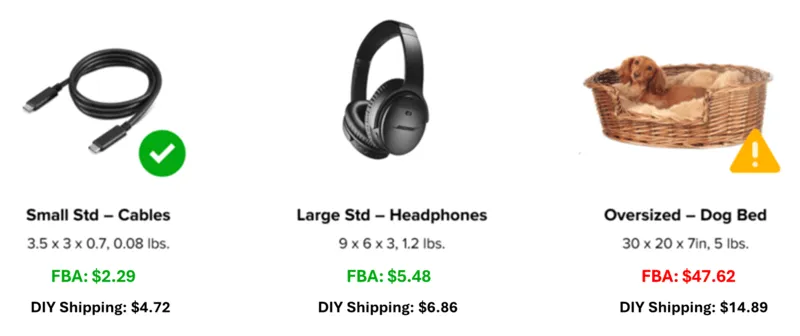
Source: Amazon FBA Revenue Calculator, DIY Shipping estimated using Cahoot discounted shipping rates for Zone 4 Residential addresses.
The above example is typical of Amazon FBA fees: their price for small and standard items beats other options, but even slightly oversized products like the example 5lb dog bed ends up costing more than triple the price that a merchant could ship on their own (or using outsourced fulfillment services). The reason is simple: they’ve optimized their network for small, easy, and efficient products.
As a result, Amazon sellers who use FBA for their shipping are boxed in when it comes to growth, and they all compete with one another to sell the same small, cheaper items. If FBA is your only good option, you can’t profitably expand your product line to larger, less competitive options because fulfillment fees will eat up your margins, making a 3PL a necessary consideration. If you raise the price to compensate, then you’ll lose to the savvy merchants who have diversified their fulfillment strategies and can get the product to the customer at one-third the price.
The challenges don’t end there for Amazon FBA. Ecommerce’s year-over-year unprecedented boom in growth through the pandemic has delivered massive returns to Amazon and Amazon sellers, but it’s also left FBA bursting at the seams. To compensate, Amazon switched from ASIN-level inventory limits to product-type inventory limits, and overnight sellers saw their inventory limits cut by up to 65%. To this day, Amazon still enforces restock limits based on broader storage types rather than individual SKUs (e.g., standard-size, oversized, apparel, footwear), applied at the account level rather than per-product. These remain the primary structure for restock limits in 2025.
However, recent trends indicate that Amazon has quietly reinstated some ASIN-level restock restrictions on top of storage-type limits, especially during periods of high demand or for seasonal products. These additional thresholds mean that even if your total storage capacity is sufficient, a specific ASIN may be capped based on the seller’s historical sales and forecasted demand. These mixed restrictions are reported to be in effect as of mid-2025.
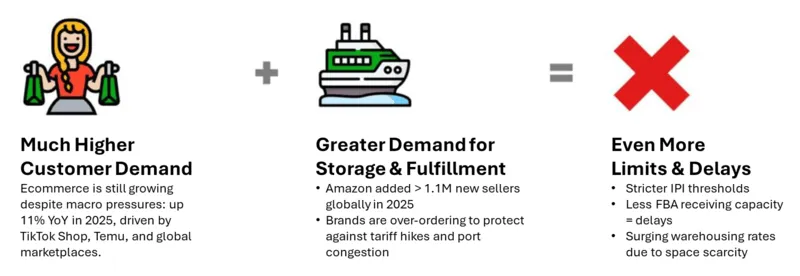
Source: US Census Bureau, Marketplace Pulse, Cahoot interviews with merchants
On top of the storage limitations, Amazon FBA can also take three or more weeks to receive inventory. This creates a huge window of time in which a seller can run out of stock on a key item, even if the seller sent a timely replenishment. And this assumes you chose the more complex and costly inbound plan and shipped all your inventory to regional Amazon FCs (rather than sending it all to one location and paying Amazon to distribute (place) the inventory for you). In the peak selling season, this is an even bigger problem. Demand surges can easily run an item out of stock in a matter of days or even hours, triggering a death spiral in which a product loses its search rank, which lowers impressions and conversions, which in turn lowers inventory limits again.
It’s clear that Amazon FBA is no longer an all-in-one solution for Amazon sellers. It’s a point solution that can be an important part of a fulfillment strategy, but needs to be augmented to cover for its flaws.
Slash Your Fulfillment Costs by Up to 30%
Cut shipping expenses by 30% and boost profit with Cahoot's AI-optimized fulfillment services and modern tech —no overheads and no humans required!
I'm Interested in Saving Time and MoneyEvaluating Amazon FBA Order Fulfillment Alternatives
Amazon FBA’s structure tells a valuable, if simple, lesson: the most cost-effective way to offer nationwide 1-day and 2-day delivery is to create a distributed fulfillment network that always has inventory near the end customer. This setup enables 1- and 2-day delivery with economic ground shipping, and without all the FBA restrictions and limitations; the best of both worlds.
To enjoy the same benefits of Amazon FBA’s network without the same drawbacks, sellers’ options generally fall into three main categories:
1. Open Multiple Fulfillment Centers Yourself
Some merchants consider opening their own network of fulfillment centers, but this path is rarely viable today. Commercial real estate costs remain high, and even when space is available, labor remains unpredictable and expensive. Recruiting, training, and retaining warehouse staff across multiple regions is a full-time operation in itself, often diverting attention from core business growth. Plus, the upfront capital outlay is steep, and long-term flexibility is limited. Consumer demand patterns shift quickly, and you’re locked in if a location becomes unprofitable or underutilized. Managing your own distributed network might seem like a way to “own” your fulfillment, but in practice, it often results in underperformance, overstaffing, and operational drag.
2. Third-Party Logistics Companies (3PLs)
Another option is to outsource fulfillment to multiple 3PLs. These are generally smaller, independent companies not connected to any specific marketplace, but can offer comprehensive supply chain solutions. But, you will have to contract with numerous 3PLs to get nationwide 1-day and 2-day coverage. Order routing across disparate 3PLs is complex and labor-intensive, so you may need to invest in expensive fulfillment software to make it more efficient. Fulfillment costs will vary between 3PLs, and not all of them can meet the strict SLAs needed to win the Buy Box on every marketplace, so be sure to use something like a 3PL request for proposal (RFP) template to get an apples-to-apples comparison.
3. Tech-enabled Fulfillment Network
A modern and affordable alternative to working with 3PLs is to use an ecommerce order fulfillment network. A tech-enabled fulfillment network upgrades the traditional 3PL model to cover the whole country in a single solution. Merchants send their inventory to multiple nodes in the network, and then the network’s software will automatically send parcels from the optimal location to the end customer, saving on shipping costs. In essence, these networks are “FBA-lite” – they have the same core functionality as FBA.
Definition of a Fulfillment Company
A fulfillment company is a third-party logistics (3PL) provider that specializes in managing the entire order fulfillment process for ecommerce businesses. They handle tasks such as inventory management, warehousing, order processing, packaging, and shipping. By outsourcing these logistics services, ecommerce businesses can focus on their core operations, such as marketing and product development, while the fulfillment company ensures that orders are processed efficiently and accurately.
Looking for a New 3PL? Start with this Free RFP Template
Cut weeks off your selection process. Avoid pitfalls. Get the only 3PL RFP checklist built for ecommerce brands, absolutely free.
Get My Free 3PL RFPBenefits of a Fulfillment Company in Ecommerce
A fulfillment company plays a crucial role in providing efficient and cost-effective order fulfillment services to sellers. Acting as an extension of the ecommerce business, these companies manage logistics and supply chain operations, ensuring that customers receive their orders quickly and accurately. This allows ecommerce businesses to scale their operations without the burden of managing warehousing, packing, and shipping, ultimately enhancing customer satisfaction and operational efficiency.
Cahoot: Alternative to Amazon FBA
Cahoot is a robust FBA alternative, and it works just as well as a backup or enhancement to FBA as it does as a full replacement. And Cahoot’s much more than that; it’s the most flexible solution in the marketplace and can ship orders for every ecommerce sales channel.
Cahoot is the next generation of tech-enabled fulfillment networks. Unlike other networks that are collections of 3PLs, Cahoot’s innovative approach unlocks and empowers merchants across the country to fulfill orders for one another. Our peer-to-peer network is a collective of highly vetted ecommerce retailers who offer up excess warehouse space and resources to provide high-quality order fulfillment to other merchants.
As a result, costs are lower than what you get with a traditional 3PL fulfillment company, and service levels are higher. For example, Dunn-Rite Products saves over $100,000 per year in shipping costs alone by shipping local orders from their Indiana and Colorado warehouses, and outsourcing fulfillment to Cahoot for regional distribution (California, Texas, Florida, Pennsylvania). They offer nationwide 1- and 2-day economical ground shipping across all their channels and dominate their category against brands that can’t compete using FBA alone.
So you can see: the Cahoot P2P network makes the Dunn-Rite example the norm for anyone selling items that don’t fit into the “small and light” box. Merchants can use the network solely for outsourced fulfillment, similar to FBA; they can partially outsource fulfillment while maintaining some of their own in-house fulfillment capacity (where it makes sense), and they can even choose to join the network as a fulfillment partner and fulfill orders for other merchants allowing them to offset some of their own outsourced fulfillment costs.
Frequently Asked Questions
What are the costs for FBA?
The main costs associated with Amazon FBA are fulfillment fees, storage fees (including aged inventory surcharges), and any extra charges for removal or disposal of inventory, inventory prep such as barcoding, placement fees, inbound defect fees, and possibly others. Make sure to factor these into your pricing strategy!
What is a 3PL?
A third-party logistics company (3PL) is a service provider that either arranges or handles a variety of supply chain functions for a business. These functions can include brokering, shipping, storing, or packing a company’s freight, as well as supply chain strategy and access to technology.
Is 3PL pricing more transparent?
3PL providers ensure transparent pricing by offering customizable logistics solutions and engaging in contract negotiations, which allows for clear and flexible pricing options. This way, you know exactly what you’re paying for and can budget accordingly.
How can I switch from Amazon FBA to a tech-enabled fulfillment network?
To switch from Amazon FBA to a tech-enabled fulfillment network, start by evaluating your current SKUs and sales channels. Choose a network like Cahoot that offers nationwide 1-day and 2-day delivery, integrates with your sales platforms, and provides a streamlined onboarding process. Make sure to assess storage capacity, order volume compatibility, and return logistics to ensure a smooth transition that doesn’t disrupt your fulfillment operations.
Do FBA alternatives offer better control over inventory and fulfillment costs?
Yes, most alternatives to Amazon FBA give merchants greater control over inventory distribution and fulfillment costs. Unlike FBA, which imposes inventory limits and seasonal surcharges, tech-enabled networks and independent 3PLs allow for dynamic inventory allocation and cost transparency. This flexibility helps sellers reduce storage costs, optimize shipping rates, and avoid stockouts, especially during peak seasons or marketplace fluctuations.

Turn Returns Into New Revenue




